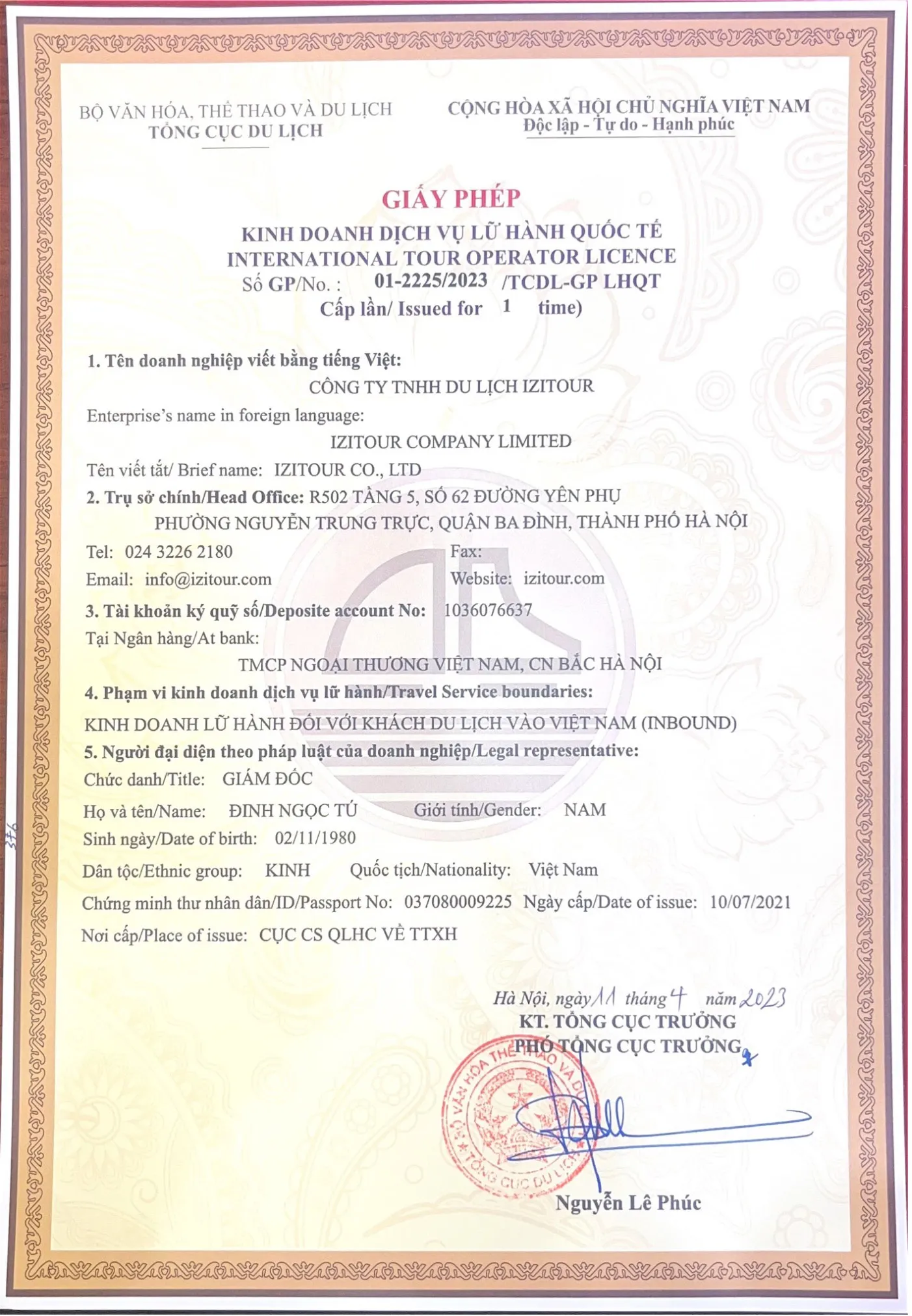The Temple of Literature is one of the most famous symbols of Hanoi's millenary civilization. As Vietnam's first national university, it represents the nation's profound respect for education and scholarly traditions. In addition to being a leading historical relic and an attractive tourist destination, the Temple of Literature-Imperial Academy, or Van Mieu - Quoc Tu Giam, holds immense significance. In this article, we will explore this historic complex.
1. The history of Temple of Literature - Imperial Academy
According to historical records, the Temple of Literature (Van Mieu) was built in 1070 to worship Confucius and other Confucian sages. In 1076, the Imperial Academy (Quoc Tu Giam), Vietnam’s first university, was established right next to it. For centuries, it served as the country’s foremost center of education and examinations, nurturing scholars and affirming the vital role of learning and talent in national governance.
Initially, Quoc Tu Giam functioned under King Ly Nhan Tong as a school exclusively for the crown prince. It was later expanded to educate the children of high-ranking mandarins. In 1253, King Tran Thai Tong renamed it Quoc Hoc Vien and began accepting talented students from the common populace, marking a pivotal step in democratizing education.
The famous scholar Chu Van An, who lived during the Tran Dynasty, served as the Principal and is revered here alongside Confucius and other key figures of Confucianism. During the Le Dynasty, Confucianism became very popular in Vietnam and grew so fast. Nowadays, Van Mieu - Quoc Tu Giam is a livey proof of Vietnam's academic tradition and development. It is home to 82 stone steles that record the names of successful candidates from royal examinations between 1442 and 1779. The first steles were erected in 1484 under King Le Thanh Tong.
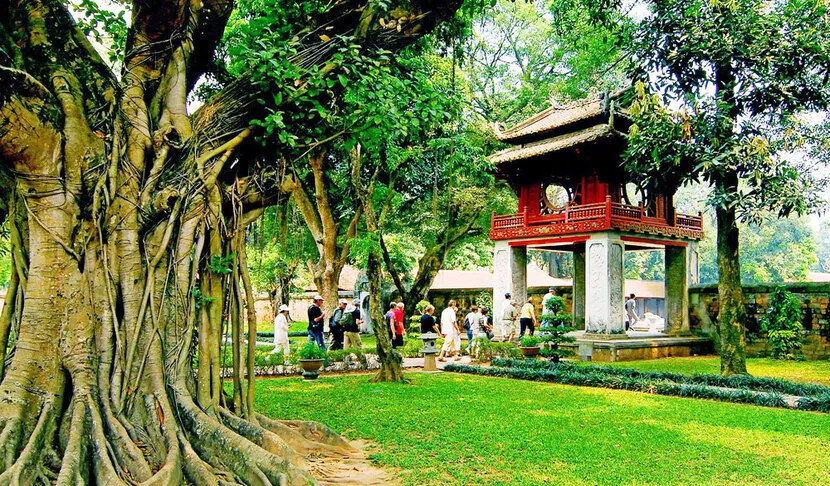
Currently, Van Mieu Quoc Tu Giam is a place for students from different levels to come to pray for academic achievements. In 2012, it officially became a national special relic, attracting more and more people to pay a visit to.
2. The unique architecture of the Temple of Literature
In addition to its cultural, educational, and historical values, the Temple of Literature boasts a distinctive and unique architecture that bears the imprint of its time.
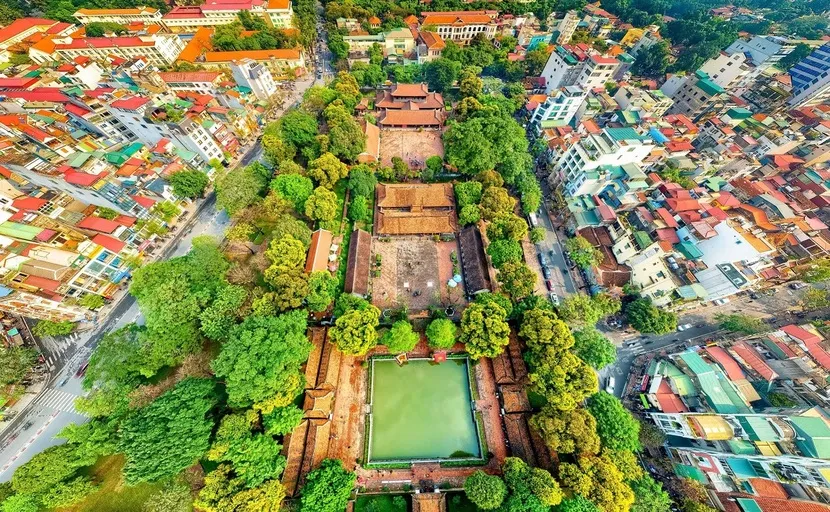
Temple of Literature - Quoc Tu Giam, located to the south of Thang Long royal citadel, is a complex of many relics covering up to 54,331m2. It is divided into 5 main layers: Dai Trung Mon (First Courtyard), Khue Van Cac (Second Courtyard), Thien Quang Well (Third Courtyard), Dai Thanh Mon (Fourth Courtyard) and Imperial Academy (Fifth Courtyard).
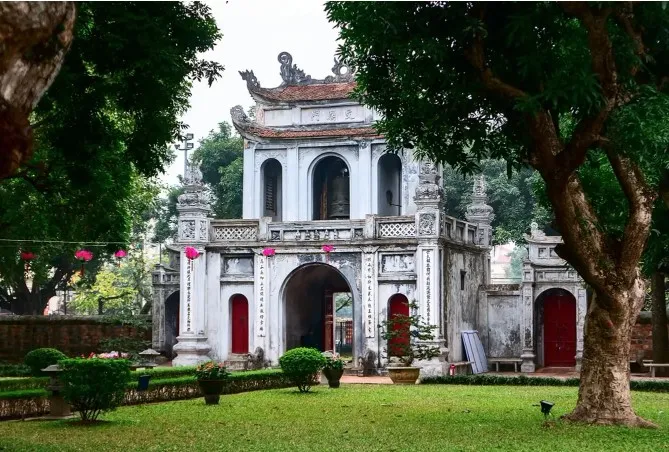
First Courtyard - Khu Nhap Dao
This is the entrance to the temple complex and is marked by a large gate known as the Great Middle Gate. The first courtyard is a spacious area with landscaped gardens, pathways, and various trees. Step over the Great Middle Gate, feel the ambiance of green trees and leave the bustling life of Hanoi behind you.
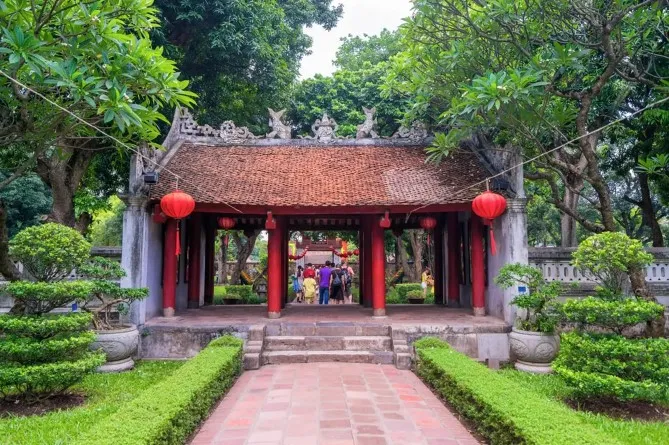
Second Courtyard - Khue Van Cac
Passing through the Khue Van Cac, you enter the second courtyard. With a 2-story design based on the yin-yang theory of the five elements, Khue Van Cac is a noble symbol of Confucianism and has been chosen as the symbol of Hanoi. You can see the image of Khue Van Cac in many of the millennium capital's promotional programs. Many visitors take beautiful photos with this icon.
Third Courtyard - Bia Tien Si
This area is also home to the Well of Heavenly Clarity (Thien Quang Tinh). The courtyard also contains various altars, pavilions, and stone stelae. The Doctor's Stele of most talented scholars has been inscribed here since 1442. They are the Temple of Literature's most precious heritages.
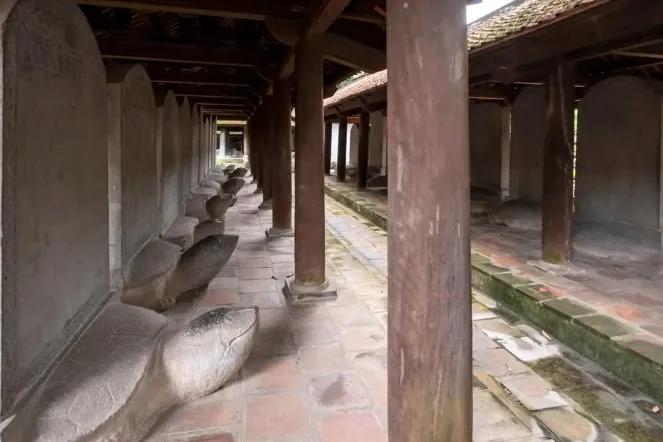
Fourth courtyard - Dai Thanh
Moving beyond the House of Ceremonies, you'll enter the fourth courtyard, which was used for important rituals and ceremonies. This area is dedicated to the worship of Confucius and his disciples. The fourth zone is the centre and largest area of the Temple of Literature. The architecture of this zone is remarkable, with Bai Duong and Upper Palace, which houses the statues and plaques of Confucius and other notable scholars... It's also a place where visitors come to burn incense to pray for good luck on the path to learning and fame.
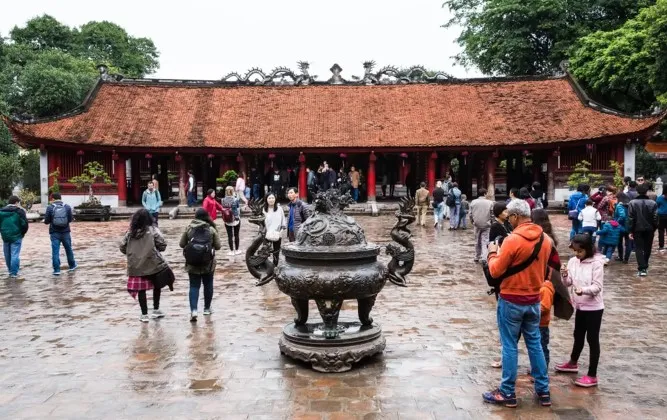
Fifth courtyard - Nha Thai Hoc
The fifth and final courtyard is the area behind the sanctuary of great men. It contains a beautiful garden with peaceful surroundings, including ancient trees and well-maintained pathways. Stepping through the garden, you enter a house for worshipping the kings of the Ly dynasty, including Ly Thanh Tong, Ly Nhan Tong, King Le Thanh Tong and great teacher Chu Van An. This area provides a tranquil space for visitors to relax and reflect.
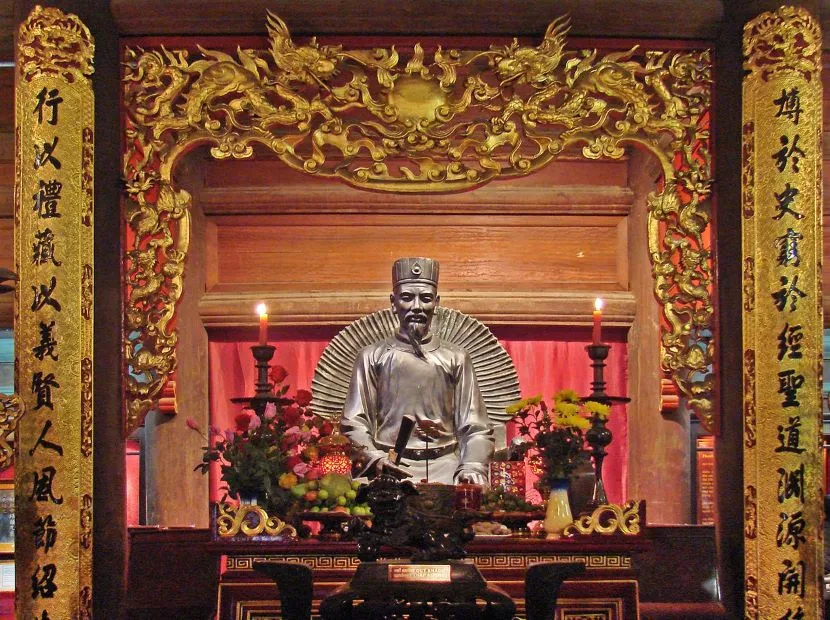
3. The philosophy of yin and yang in architecture
Van Mieu Quoc Tu Giam's architecture is deeply influenced by the yin-yang philosophy of the oriental concept. As in other Asian countries, yin and yang are an important element of feng shui, a concept that has been ingrained in the subconscious mind of the Vietnamese people for thousands of years.
Yin and yang represent the harmony of heaven and earth, with people as its center, and the Temple of Literature's architecture clearly demonstrates this.
The areas of the Temple of Literature are built along a main axis, showing the convergence of Heaven - Earth - Human, the harmony of heaven and earth at one point. This is the core of the Five Elements. Furthermore, this philosophy covers even the smallest design details in this relic complex. Some of the typical architectures are mentioned below:
Van Mieu Mon
The entrance gate of Van Mieu Quoc Tu Giam is designed in a very traditional 3-gate style. A large main gate in the centre, 2 side gates on either side combined with a dome. In particular, the main gate of the Temple of Literature is built on 2 floors superimposed on each other. The 2nd floor is designed with 8 roofs according to the famous bagua number.
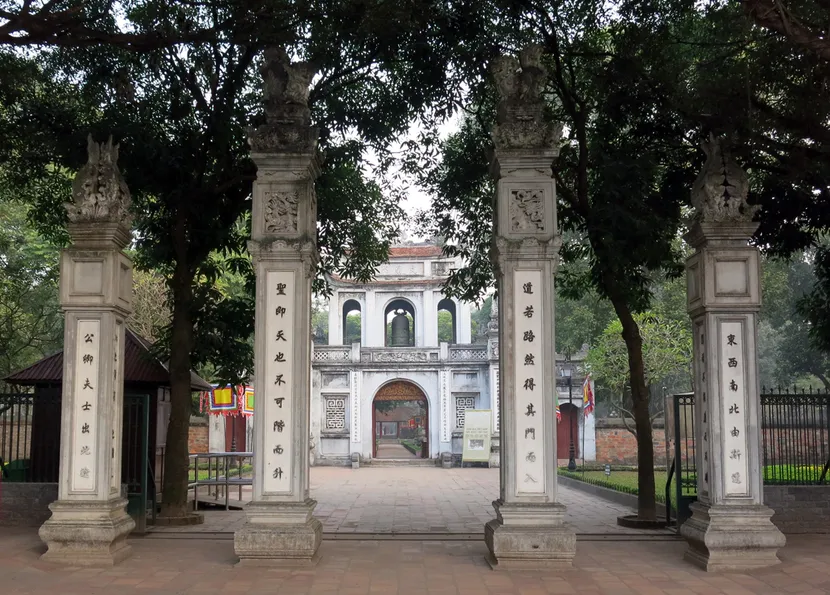
Therefore, it can be seen that the architecture of the entrance to the Temple of Literature has bold elements of yin and yang, the five elements, the bagua, and follows some feng shui rules.
Khue Van Cac
Why Khue Van Cac? Khue here is the star Khue, the brightest constellation in the universe, and Van means literature. Therefore, Khue Van Cac is the symbol of literature and learning.
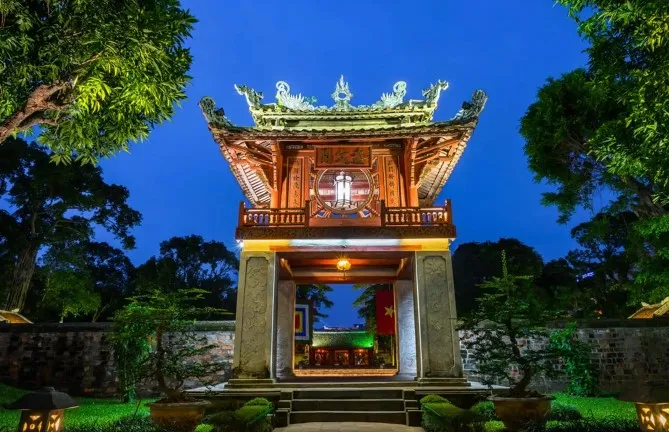
Khue Van Cac's design is made according to the famous symmetrical architecture with square columns, round windows, symbolising earth and sky. This is also the clearest expression of the yin and yang philosophy in the architecture of this iconic monument.
4. Guide to visit the Temple of Literature - Imperial Academy
It can be seen that Van Mieu Quoc Tu Giam is not only a famous historical, cultural and educational relic but also a unique architectural heritage with profound spiritual values. This is why this place has become one of the attractive tourist destinations in Hanoi, the capital.
Where is the Temple of Literature?
The Temple of Literature is located in the heart of Hanoi, next to four streets: Nguyen Thai Hoc str., Ton Duc Thang str., Van Mieu str., and Quoc Tu Giam str.
Specific address: 58 Quoc Tu Giam Str., Dong Da district, Hanoi
Ticket prices
Van Mieu Quoc Tu Giam is a tourist attraction where entrance fees are paid. The ticket price for adults is VND 70,000/person, which is quite a reasonable price for one of the nicest places in Hanoi.
Furthermore, children under 16 are free, while those who live in remote areas, ethnic minorities, the elderly over 60, people with serious disabilities, and people with deserving services to the country are entitled, students over 16 have a discount of 50% on rates if they have student cards.
Opening hours
The Temple of Literature is open every day of the week, including weekends and public holidays. Winter opening hours are 7:30 AM, other seasons 8:00 AM, and it closes at 6:00 PM.
Notes when visiting the Temple of Literature
- Dress code: Visitors should dress neatly and politely, not offensive
- Walk slowly, queue, maintain order, and ensure hygiene when visiting the monuments
- Do not smoke and bring objects and materials that are not permitted
- Do not write or draw on architectural works, damaging the cultural, historical, and architectural values
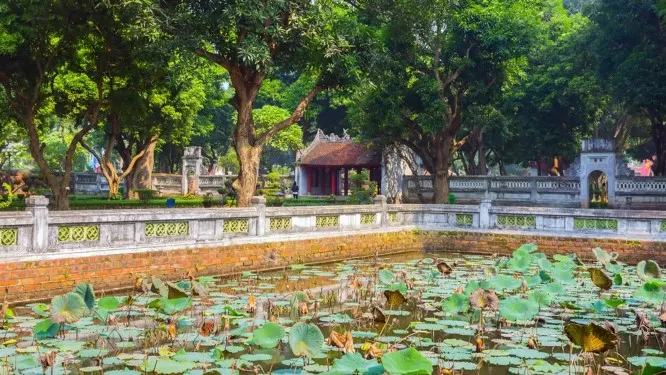
The above article has presented the Temple of Literature with the most complete and detailed information. With great cultural and historical values, Van Mieu Quoc Tu Giam is an attractive tourist destination not only for domestic tourists but also for international visitors. If you have any further questions about tours in Hanoi, feel free to leave comments below or contact our travel experts via email at [email protected] for instant support.
Hanoi Excursions & Real-time Prices
(Photo: Internet)
For more activities in Hanoi, you can see the following:
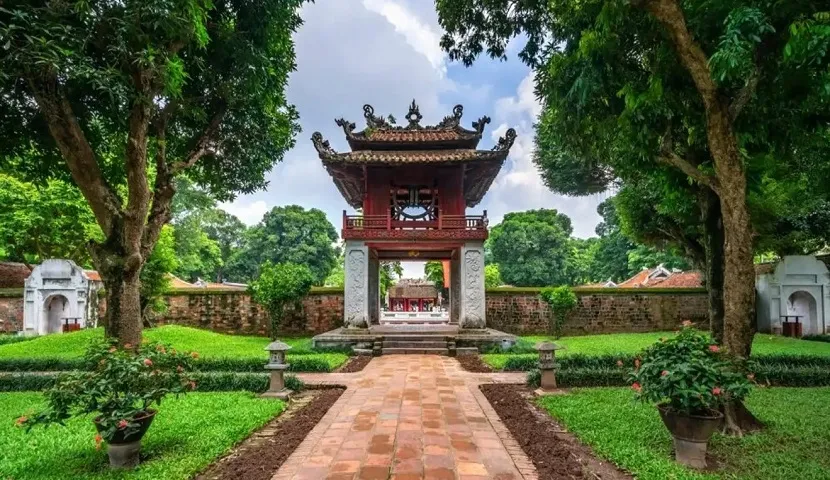






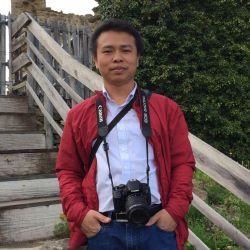
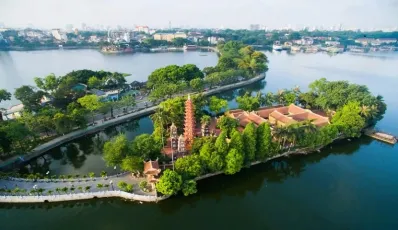
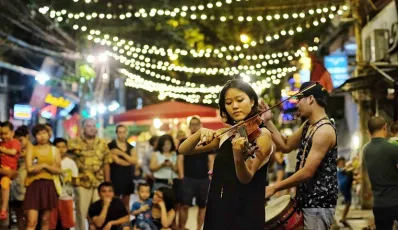
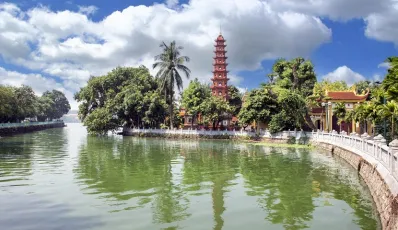
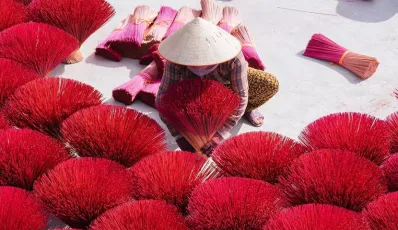

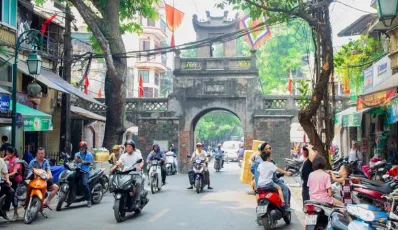
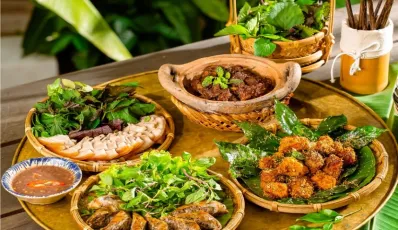
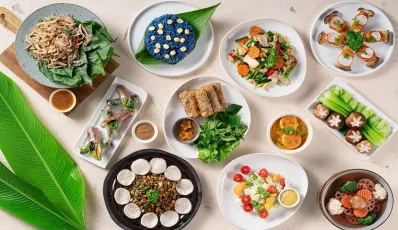
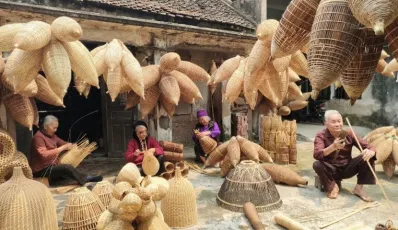

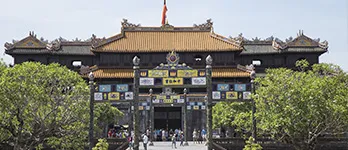
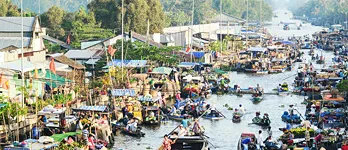

 TRAVELERS' CHOICE 2025
TRAVELERS' CHOICE 2025 